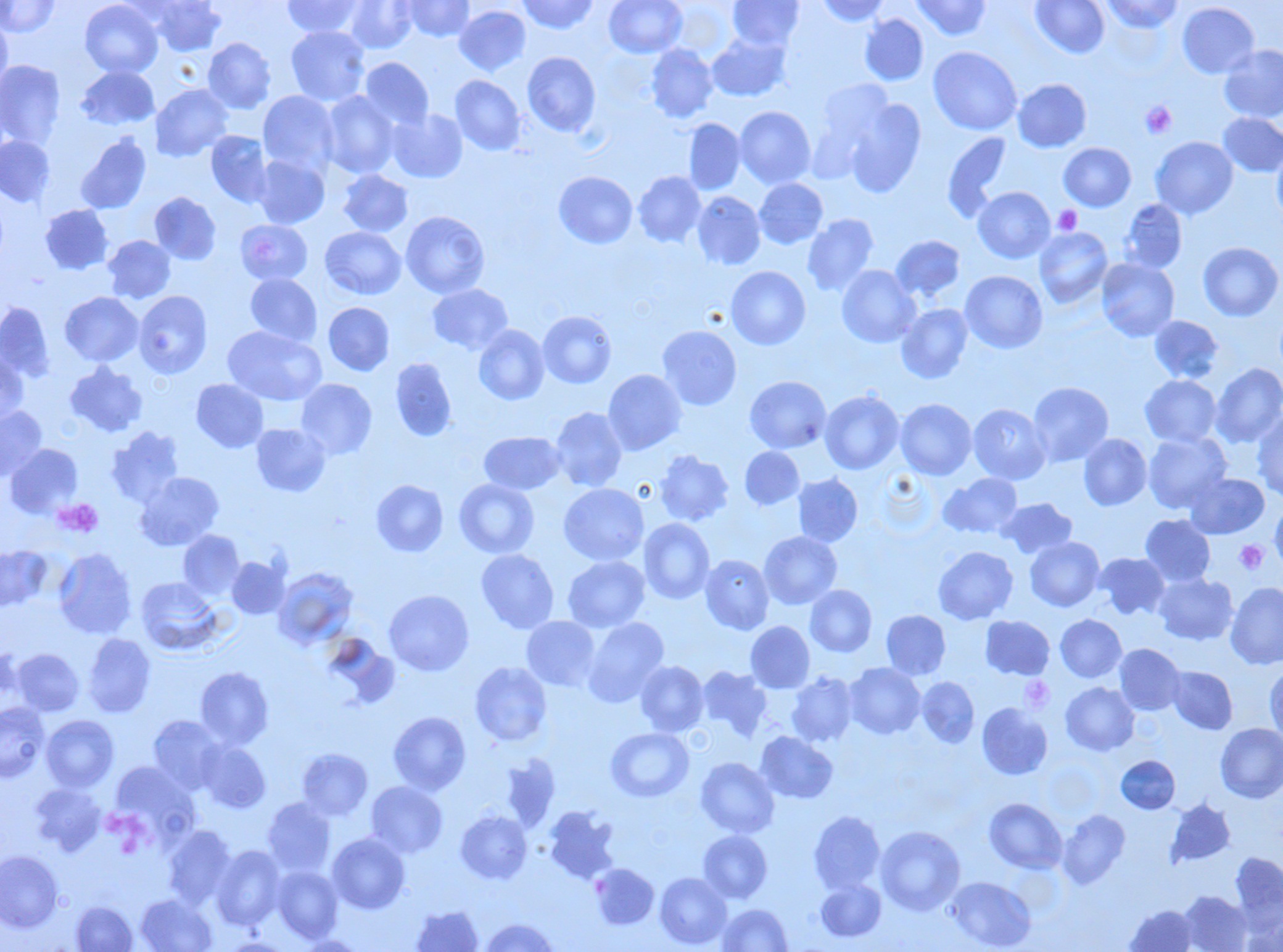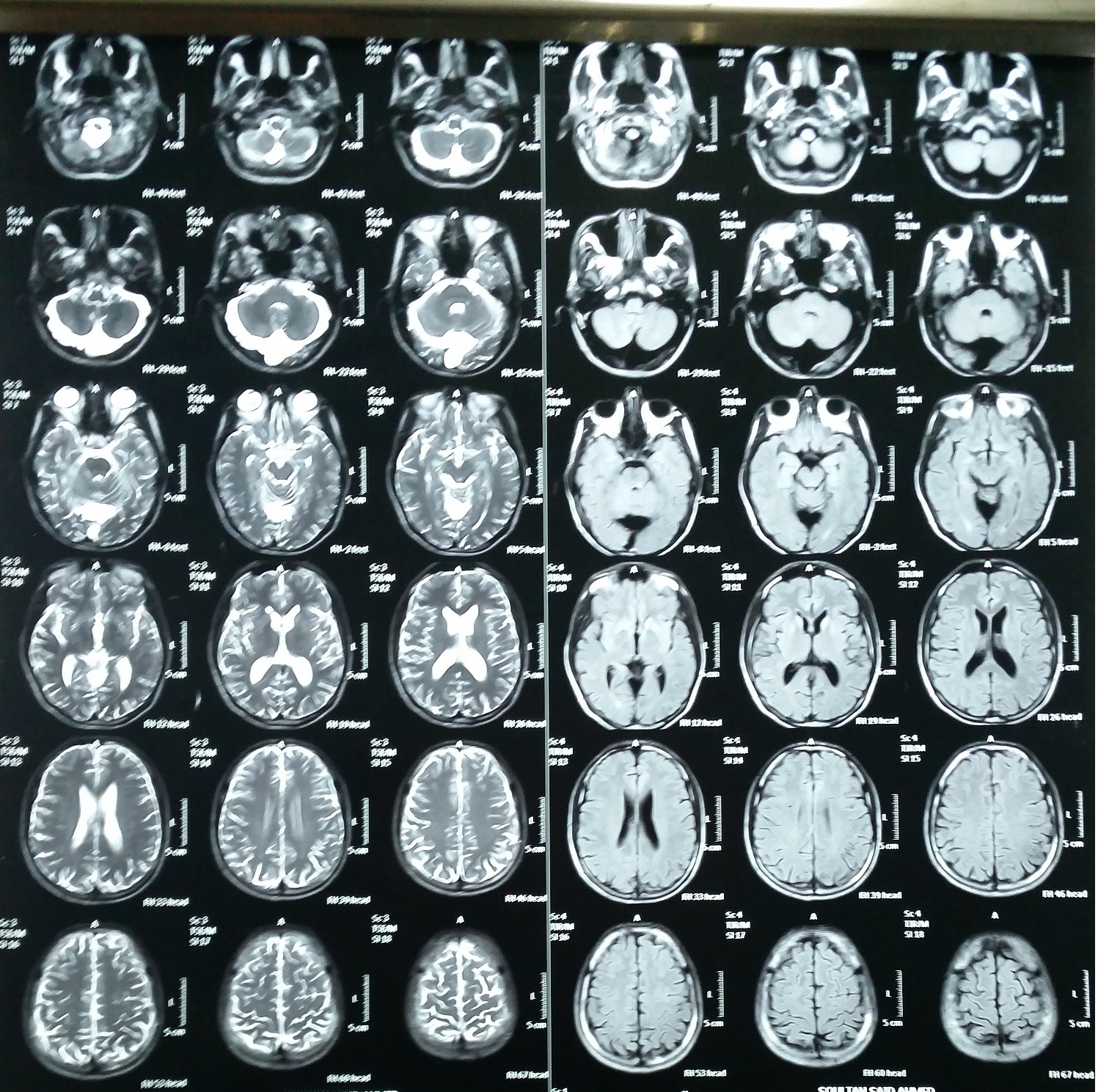Session Information
Date: Saturday, October 6, 2018
Session Title: Tics/Stereotypies
Session Time: 1:45pm-3:15pm
Location: Hall 3FG
Objective: This reports an Egyptian family with two members with the rare condition of choreoacanthocytosis and amyotrophy.
Background: choreoacanthocytosis is an autosomal recessive disorder caused by a genetic defect in a gene called CHAC gene which encodes a protein called chorein which function is still unknown and is expressed in different tissues of the body “1”. Clinically, choreoacanthocytosis is characterized by multiple forms of movement disorders including chorea, tics, self-mutilation, wasting of small muscles and other manifestations starting in a young adult “2”. Diagnosis depends on recognizing characteristic clinical features, the presence of acanthocytes in peripheral blood and exclusion of other differential diagnoses.
Methods: An Egyptian family with 2 members presenting with: gradual onset progressive course of multiple AIM (simple vocal tics, motor tics, choro-athetosis, dystonia & bruxism), lip and tongue mutilation and emotional lability for the last 1 year with marked wasting (Proximal>Distal, ULs>LLs), fasciculations, bilateral LL weakness Distal=Proximal and bilateral UL glove tingling till mid-forearm, dysphagia, personality & behavioral changes (childish behavior, emotional lability, hyperphagia).
Results: The patients underwent investigations: – Blood film showing positive acanthocytes in peripheral blood – Elevated CK – NCS: axonal neuropathy and AHCs affection – MRI brain: mild caudate atrophy – Abdominal U/S: hepatosplenomegaly – Serum copper, lipid profile, uric acid: Normal Unfortunately, genetic testing could not be done due to unavailability in our center. The patients received medical treatment in the form of Baclofen, Levetiracetam, clonazepam, and risperidone with an improvement in his movements
Conclusions: We represent two patients from a family presenting with young onset development of AIM (chorea and tics) associated with behavioral changes, self-mutilation, and amyotrophy. Investigations included: acanthocytes in peripheral blood, hyperCPKemia, AHC affection with axonal polyneuropathy and hepatosplenomegaly. Other investigations were normal. Unfortunately, genetic testing could not be done due to unavailability of the technique in our center but based on clinical features and supporting investigations we can conclude that we are facing a family with choreoacanthocytosis and amyotrophy.
References: “1” Danek A, Bader B, Velayos-Baeza A, Walker RH: Autosomal recessive transmission of chorea-acanthocytosis confirmed. Acta Neuropathol. 2012 Jun;123(6):905-6. Epub 2012 Apr 3. “2” Jung HH, Danek A, Walker RH: Neuroacanthocytosis Syndromes.Orphanet J Rare Dis. 2011;6:68. Epub 2011 Oct 25.
To cite this abstract in AMA style:
A. Dahshan, S. Ahmed, A. Hasan, A.S. Othman, D. Mekkawy, O. Yakoub, D. Abdulatif, Y. Gamil. A case report of an Egyptian family with a rare condition of choreoacanthocytosis and amyotrophy [abstract]. Mov Disord. 2018; 33 (suppl 2). https://www.mdsabstracts.org/abstract/a-case-report-of-an-egyptian-family-with-a-rare-condition-of-choreoacanthocytosis-and-amyotrophy/. Accessed April 20, 2025.« Back to 2018 International Congress
MDS Abstracts - https://www.mdsabstracts.org/abstract/a-case-report-of-an-egyptian-family-with-a-rare-condition-of-choreoacanthocytosis-and-amyotrophy/


